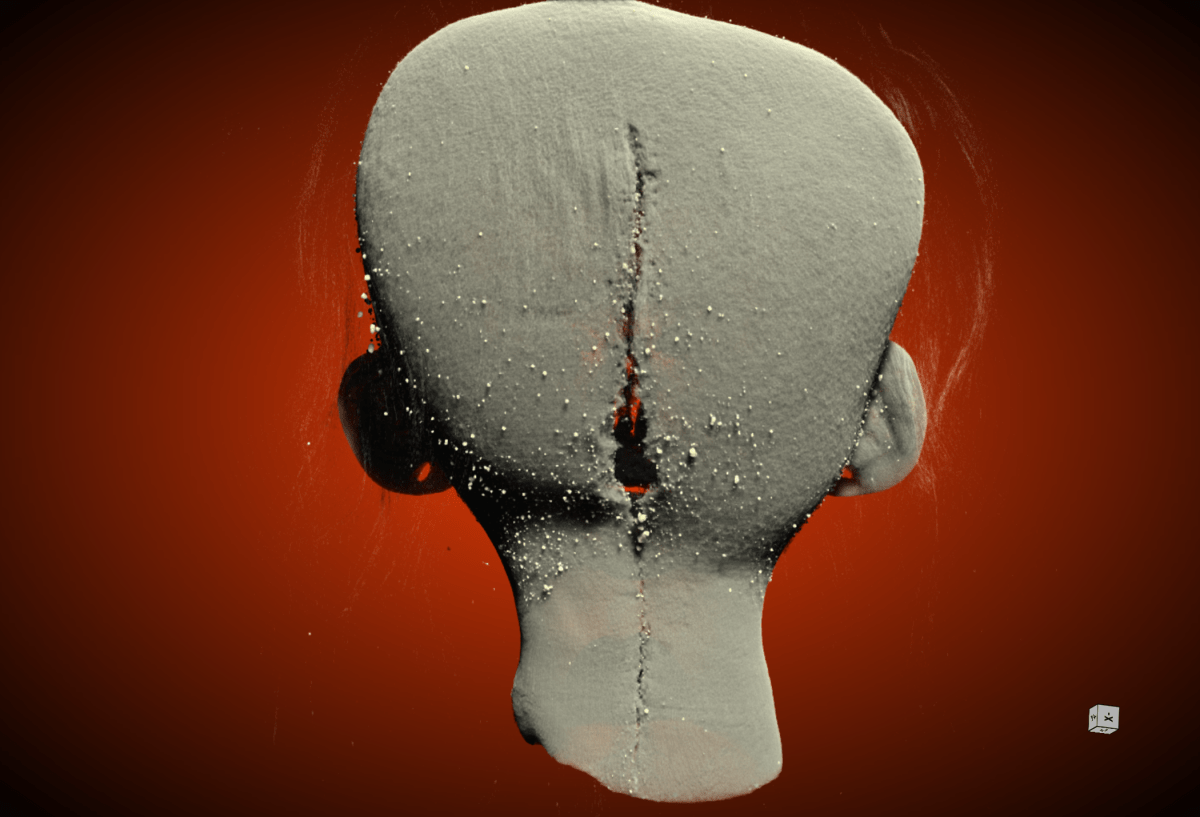Researchers from Western University have confirmed that a tsantsa, or shrunken head, in the collection of the Chatham-Kent Museum is made of real human remains and is not a reproduction.

The research team, which included members from Universidad San Francisco de Quito in Ecuador, were able to verify the tsantsa’s authenticity using CT and micro-CT scanning technology, said a release from Western.
The verification, the release said, was “an important step in the global effort toward decolonization and preserving and understanding Indigenous history.”
“This novel scanning approach is a significant first step in authenticating tsantsas as the global community shifts its mindset towards Indigenous-led repatriation of human remains, art and archeological artifacts currently held in public and private collections around the world.”
The tsantsa in the museum’s collection was donated to the organization by the local Sulman family in the 1940s after it was purchased in the Amazon basin from “Peruvian Indians” in South America, according to the little information contained the museum’s original accession record, the release says.
“We didn’t actually know anything more about about that that shrunken head. For things that were gathered in the late 1800s, early 1900s, that’s not at all uncommon,” said Andrew Nelson, chair of Western’s Department of Antropology and one of the co-authors of the research paper, published last week in the journal PLOS One.
“The travellers would buy these things, they’d bring them home and then eventually they would donate them to the museums. We actually don’t know anything more about it. That was one of the goals of the project was just what more can we learn?”
- Life in the forest: How Stanley Park’s longest resident survived a changing landscape
- Bird flu risk to humans an ‘enormous concern,’ WHO says. Here’s what to know
- Mental health support still lacking 4 years after mass shooting: Nova Scotia mayor
- Buzz kill? Gen Z less interested in coffee than older Canadians, survey shows
According to the research paper, ethno-historic sources suggest that ceremonial tsantsas were created to be war trophies of enemy heads collected after battle and shrunken by the Shuar and Achuar People of Ecuador and Northern Peru.
The practice, the paper says, was an attempt to “trap the avenging soul of the deceased and protect the victor from spiritual revenge.”
“By creating a tsantsa, the soul is trapped inside the remains as the eyes and mouth are closed so there can be no unintended impact on the living from the spirit’s power. Tsantsas were then displayed inside specific houses or on poles, and not worn as suggested in much of the existing anthropological literature.”
According to the paper, commercial production of tsantsas began soon after the Shuar and Achuar People began trading relationships in the early- to mid-1800s with European settlers and missionaries, who acquired the heads as pieces for their private collections.
Tsantsas are common in museums, however it has been a challenge to determine if one has been created for a ceremonial purpose from human remains, or for the commercial market from animal skins, including pigs, monkeys and sloths, and occasional plugs of human hair, the paper says.
“It quickly became apparent that there was a real market for these. So there were some that were just flat out fakes, they were being made out of the animal skins and things like that, and there were other ones that were actually, they were human,” Nelson says.
“There are just, sort of, rumours of this — none of this has actually been demonstrated — but there were rumours that they would actually take heads of people who had died in the hospital and create shrunken heads out of those and then sell those as genuine shrunken heads.”
While researchers were able to determine the head at the Chatham-Kent Museum was made from human remains, whether it was the result of a ceremonial purpose or was created for the commercial market is unclear.
The paper notes that researchers identified traits suggesting both an authentic ceremonial preparation (“the rough cut at the back of the skull and double hiding”) and commercial production (“the use of modern thread in the stitching of the posterior incision, eyes, and lips.”)
“The ultimate conclusion that we come up with in the article is that maybe we we need to rethink this strict dichotomy between ceremonial ones and ones that were manufactured for the market,” Nelson says.
“(To) look at more of these and think about, what is the range of variability in terms of the manufacture of these things … then you’re starting to talk about variability in the cultural practise, and … as an anthropologist, that becomes much more interesting.”
Nelson says one of the researchers in Ecuador, Maria Ordóñez, has been working directly with the Shuar in relation to the tsantsa studies, “seeking from them … what are they interested to know more about these? What is their Indigenous perspective, what is their oral history about these things?”
“Really the next step is to be working with Maria and the Shuar there to say, ‘what do you want to know more that we can help you with in terms of the scanning?'” he said.
Nelson says they’ve also been in talks with the Pitt Rivers Museum in Oxford, England, which has 10 tsantsas in their collection, six of them human, all acquired between 1884 and 1936, according to the museum’s website.
Though the museum took the tsantsas off display in 2020, the museum has continued to do research and has been working with the Shuar in determining culturally appropriate ways to have the heads shown to the public, Nelson said.
The researcher’s article can be read in full on the PLOS One website.
— with files from Matthew Trevithick









Comments